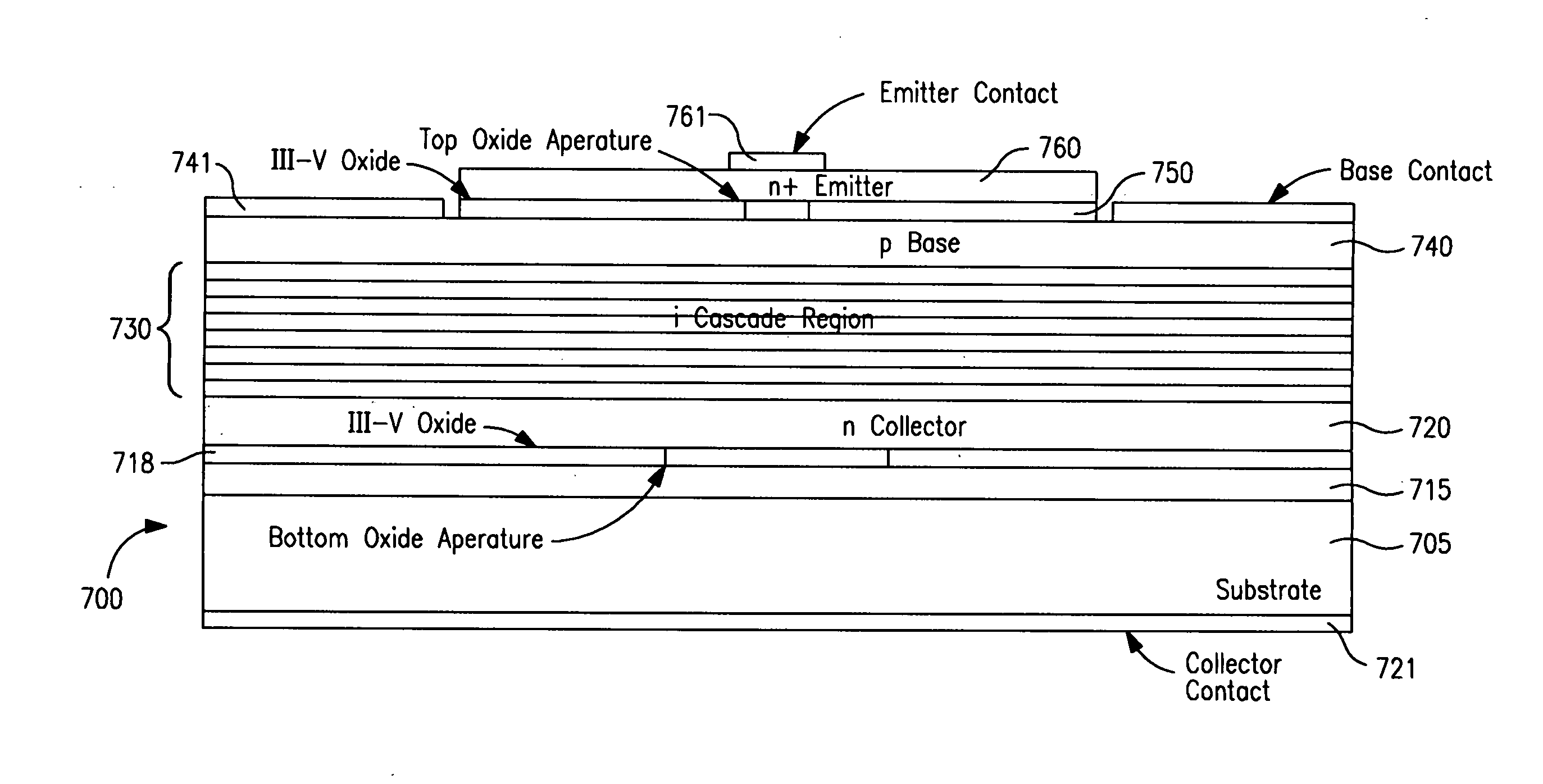Semiconductor Device And Method For Producing Light And Laser Emission
a semiconductor and laser technology, applied in semiconductor lasers, laser details, electrical apparatus, etc., can solve the problems of limited current injection into the cascade region, two terminal n+-i-n semiconductor devices, and the greater challenge of direct modulation at high speed for qcl lasers, so as to reduce free-carrier absorption, reduce power external rf drive circuitry, and facilitate switching or modulation
- Summary
- Abstract
- Description
- Claims
- Application Information
AI Technical Summary
Benefits of technology
Problems solved by technology
Method used
Image
Examples
Embodiment Construction
[0040]FIG. 7 is a diagram of a device 700 in accordance with an embodiment of the invention, and which can be used in practicing an embodiment of the method of the invention. Devices hereof can be made using, for example, epitaxial deposition, such as metal organic chemical vapor deposition, and molecular beam epitaxy for superlattice layers, and / or any other suitable techniques, including techniques conventionally used to fabricate heterojunction bipolar transistors (HBTs) and quantum cascade lasers (QCLs). The device of FIG. 7 employs a conductive substrate 705 having a subcollector layer 715 disposed thereon, followed by an oxide-defined aperture layer 718 and a collector layer 720 which, in the present embodiment, is n-type. The aperture can be made using a buried oxide layer, formed using lateral oxidation (see, for example, S. A. Maranowski, A. R. Sugg, E. I Chen, and N. Holonyak, Jr., “Native Oxide Top-and Bottom-Confined Narrow Stripe p-n Aly Ga1-yAs—GaAs—InxGa1-xAs Quantum ...
PUM
 Login to View More
Login to View More Abstract
Description
Claims
Application Information
 Login to View More
Login to View More - R&D
- Intellectual Property
- Life Sciences
- Materials
- Tech Scout
- Unparalleled Data Quality
- Higher Quality Content
- 60% Fewer Hallucinations
Browse by: Latest US Patents, China's latest patents, Technical Efficacy Thesaurus, Application Domain, Technology Topic, Popular Technical Reports.
© 2025 PatSnap. All rights reserved.Legal|Privacy policy|Modern Slavery Act Transparency Statement|Sitemap|About US| Contact US: help@patsnap.com



